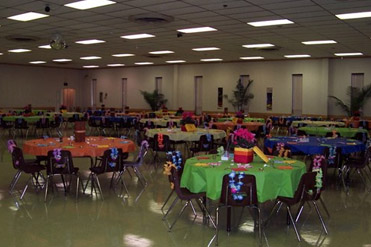News
LFD asks that you give thought to Winter Fire Safety
Wednesday, December 9, 2020
“As everyone gets busier during the holidays, we often become rushed, distracted or tired,” says Michael Lowe, Public Information Officer of the Delaware State Fire School. “That’s when home fires are more likely to occur.” Fortunately, with a little added awareness and some minor adjustments to holiday cooking and decorating, the season can remain festive and safe for everybody. “By taking some preventive steps and following simple rules of thumb, most home fires can be prevented,” says Mr. Lowe. With unattended cooking as the leading cause of U.S. home fires and home fire injuries, Lowe recommends to stay in the kitchen while you’re frying, grilling, boiling, or broiling food. Most cooking fires involve the stovetop, so keep anything that can catch fire away from it, and turn off the stove when you leave the kitchen, even if it’s for a short period of time. If you’re simmering, baking or roasting food, check it regularly and use a timer to remind you that you’re cooking. The Delaware State Fire School also suggests creating a “kid-free zone” of at least three feet around the stove and areas where hot food and drinks are prepared or carried. Candles are widely used in homes throughout the holidays, and December is the peak month for home candle fires. The nonprofit National Fire Protection Association’s (NFPA) statistics show that two of every five home decoration fires are started by candles. The Delaware State Fire School encourages Delaware residents to consider using flameless candles, which look and smell like real candles. However, if you do use traditional candles, keep them at least 12” away from anything that can burn, and remember to blow them out when you leave the room or go to bed. Use candle holders that are sturdy, won’t tip over and are placed on uncluttered surfaces. Avoid using candles in the bedroom where more than one-third of U.S. candle fires begin or other areas where people may fall asleep. Lastly, never leave a child or pet alone in a room with a burning candle. According to NFPA, U.S. fire departments respond to an average of 210 home structure fires caused by Christmas trees per year. Three of every ten of them is caused by electrical problems, and one in four result from a heat source that’s too close to the tree. The Delaware State Fire School offers the following advice for picking, placing and lighting the tree: • If you have an artificial tree, be sure it’s labeled, certified or identified by the manufacturer as fire-retardant. • If you choose a fresh tree, make sure the green needles don’t fall off when touched; before placing it in the stand, cut 2” from the base of the trunk. Add water to the tree stand, and be sure to water it daily. • Make sure the tree is not blocking an exit, and is at least three feet away from any heat source, like fireplaces, space heaters, radiators, candles and heat vents or lights. • Use lights that have the label of a recognized testing laboratory, and make sure you know whether they are designed for indoor or outdoor use. • Replace any string of lights with worn or broken cords, or loose bulb connections. Read manufacturer’s instructions for number of light strands to connect. • Never use lit candles to decorate the tree. • Always turn off Christmas tree lights before leaving the home or going to bed. • Delaware State Parks offer programs for recycling of Christmas Trees. After Christmas, get rid of the tree. Dried-out trees are a fire hazard and should not be left in the home or garage, or placed outside the home. • Bring outdoor electrical lights inside after the holidays to prevent hazards and make them last longer. By following these fire prevention tips and measures, the Laurel Fire Dept. says you can greatly reduce the risk of fire in your home, and enjoy a safe holiday season. “The holidays can quickly turn from joyful to tragic when a fire occurs. By taking simple precautions, people can avoid potential fire hazards, and make this time of year a healthy and happy one. Visit www.nfpa.org/holiday or www.FireAdvocates.org for more information and safety tips.









